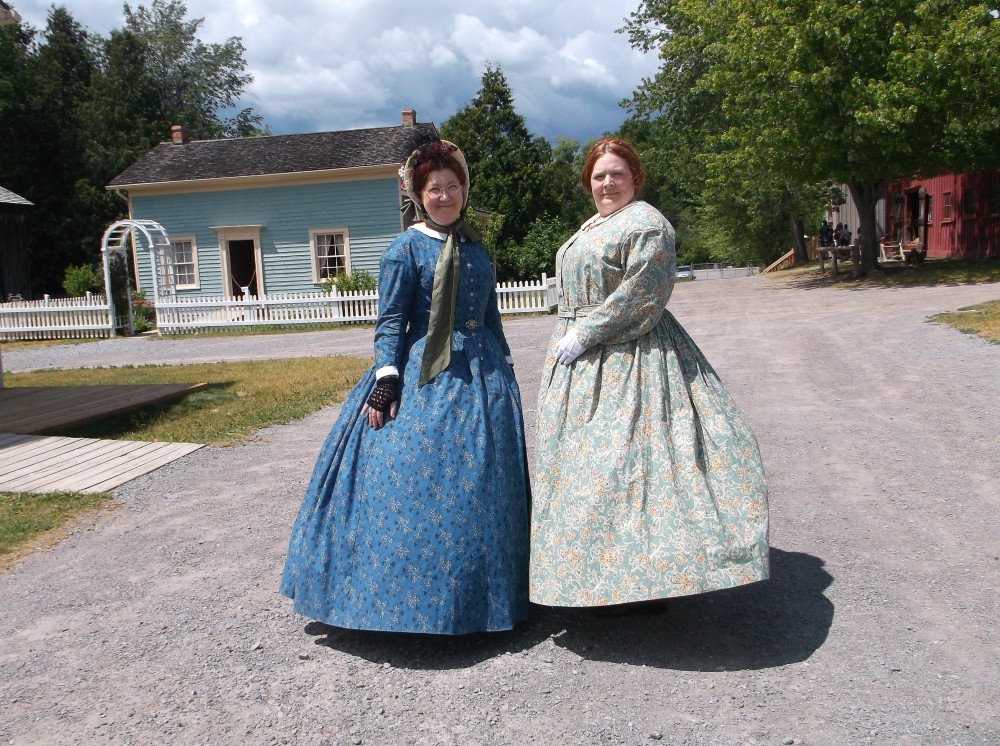In preparing notes for the fashion show which formed a part of the Journey to Confederation Youth Fair, it struck home that the popular perception of fashion is that it is a frivolous pastime for the wealthy and has no relevance to the “real world”. In fact, changes in fashion usually reference what is happening socially, politically and economically in the world.
For example, the sea change that happened in the shape of women’s fashions between the 18th century highly structured gowns with side panniers, heavy underskirts and tightly corseted bodices to the light airy high-waisted muslin gowns of the Regency period (with minimal undergarments!) signaled the new republican ideas that resulted in the American and French revolutions. Interestingly, Regency fashions were viewed only twenty five years later as shockingly loose and immoral!

As the 19th century evolved, dresses grew more voluminous, hiding even the ankle, and the bodices became tight-fitting and highly corseted again. In the fashionable bodices of the 1840s and 1850s, a lady could not raise her arms very high or do physical work: these dresses were designed for sitting, walking, and doing only genteel activities like embroidery. Bonnets grew more enveloping, so that the profile could only be glimpsed from the side.

Hoop petticoats got larger and more unwieldy, making free movement problematic (although at least the hoop freed one from having to wear seven or eight petticoats as in the forties and early fifties); though widely mocked by male commentators, these were universally worn – even to the ladies’ chagrin, by maids and other lower classes!). Morphing into the bustle-era, clothing became more-tightly fitting. Interestingly enough, as women’s fashions made free movement more difficult, legislation was enacted curtailing women’s ability to vote, own property and have dominion over their own lives. Women were supposed to be content to be wives and mothers, “the heart of the home”.

There was a movement in the 1880s for dress reform, calling for loose-fitting styles; this coincided with the beginning of the aesthetic movement in the arts, another flowering of new and revolutionary ideas. “Reform dress” was of course mocked and vilified by the established press and most men.
At the turn of the last century, women’s clothing took another turn, as silhouettes narrowed again, and many details were borrowed from menswear. This reflected the growing movements for women’s suffrage, temperance and the fight to get women admitted to colleges, universities and traditionally male occupations such as medicine, politics and the law.

Fashion is more than frippery: it mirrors society’s current concerns, and underscores the thrust for change in the world. Keep that in mind the next time you enjoy a fashion show or take a peek at a fashion magazine.
